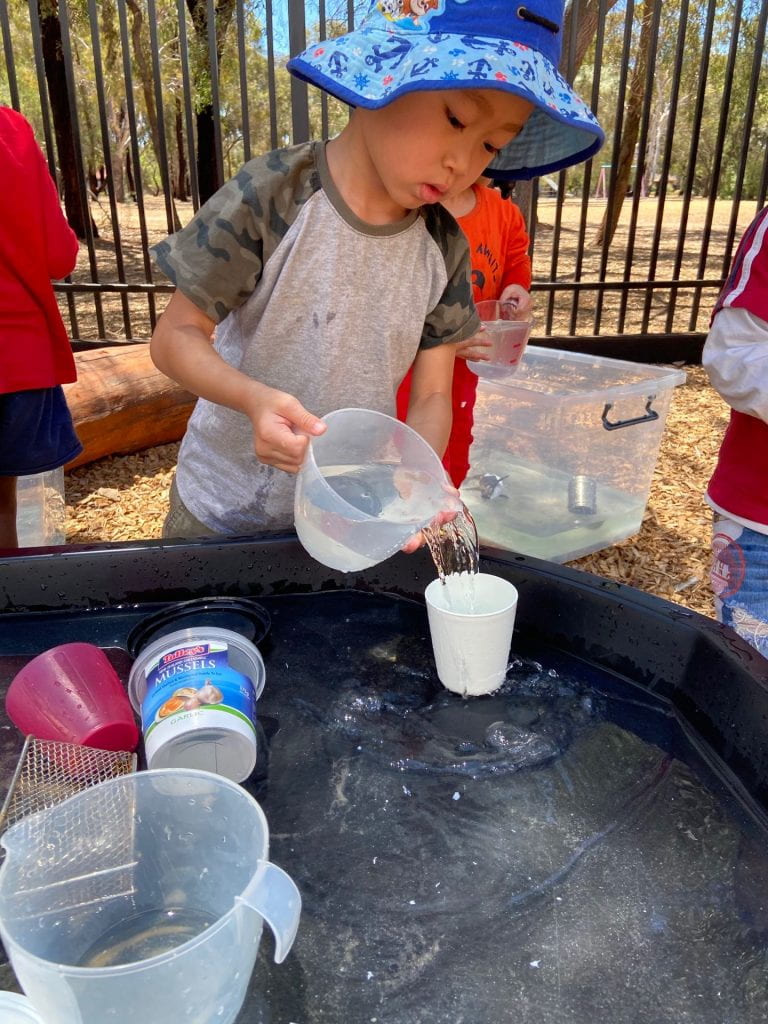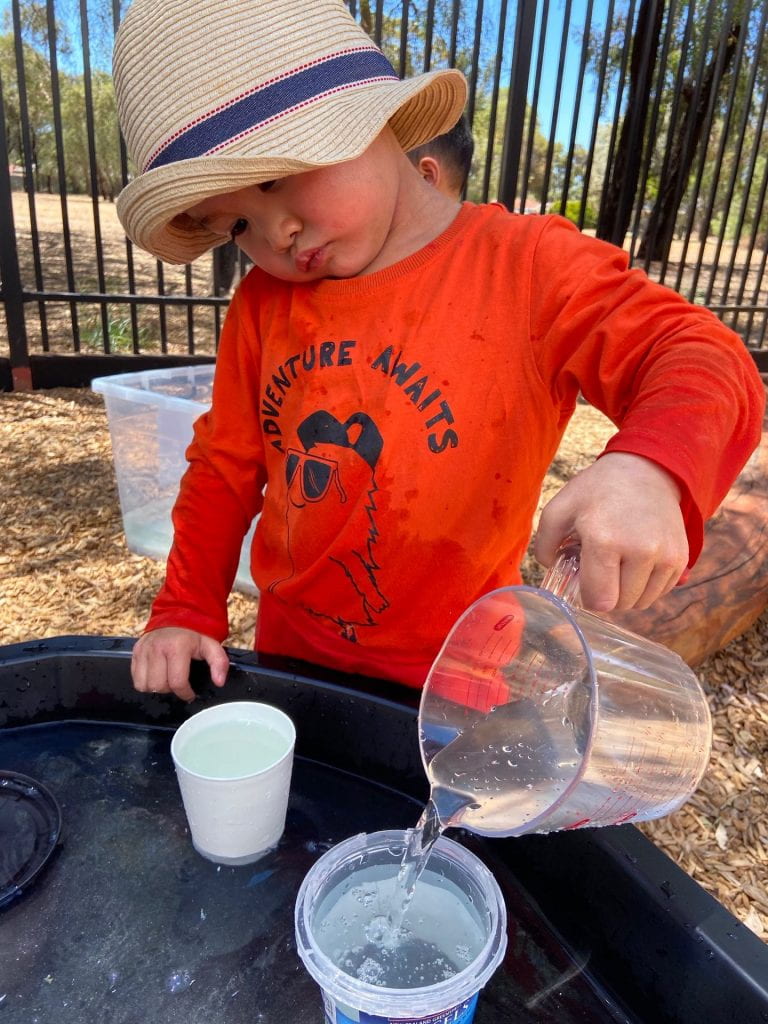Schemas are described as patterns of behaviour which allow children to explore and express developing ideas and thoughts through play and exploration. The repetitive action of schematic play allow children to construct meaning in what they are doing.
Children learn best through opportunities to engage in active learning through hands on experiences. These opportunities allow children to problem solve, question, predict, explore, hypothesise, imagine and develop independent choices and decisions.
Children use play to develop understandings through their senes and movements as they interact with their environment, teachers, peers and resources. Therefore, we carefully curate our learning environments to provide children with many opportunities to interact with a wide variety of materials and tools. We also support children’s schematic play patterns by building on children’s interests to engage in deep and sustained learning experiences.
The most common types of schema include:
- Trajectory
- Rotation
- Enclosing
- Enveloping
- Transporting
- Connecting
- Positioning
- Orientation
Over the past weeks, teachers and educators have observed children’s transporting schemas. This includes moving items from place to place, carrying objects in their hands, pockets or filling containers and buckets with collected objects and moving them to other places in our ELC. There has also been in a special interest in water play, filling buckets and containers with water and moving them around the centre.
This week we have provided children with items of varied shape, size and capacity including measuring jugs, cups, yoghurt and milk containers and spoons as well as different tubs and trays of water.
The children have been filling containers and transferring water to other containers or tubs of water. Through this experience, children have been building on and developing many skills and strategies.
This includes numeracy skills and demonstrating an understanding of measurement. Specifically, capacity and how containers can hold different amounts. Children have also been observed growing their mathematical vocabulary, using words such as fully, empty, overflowing, little, big and comparative language such as more than.
Alexander was observed pouring water from a jug into a container.
Alexander: “It filled up”
Nicole (teacher): “It’s overflowing now. Water is going over the top of the container”.
Alexander: “But I still got some left” (indicating that water was still remaining in the jug, despite the container being full).
Children have developed their social skills, too. Tavae and Henry worked collaboratively, taking it in turns to hold the container whilst the other poured water into it.




